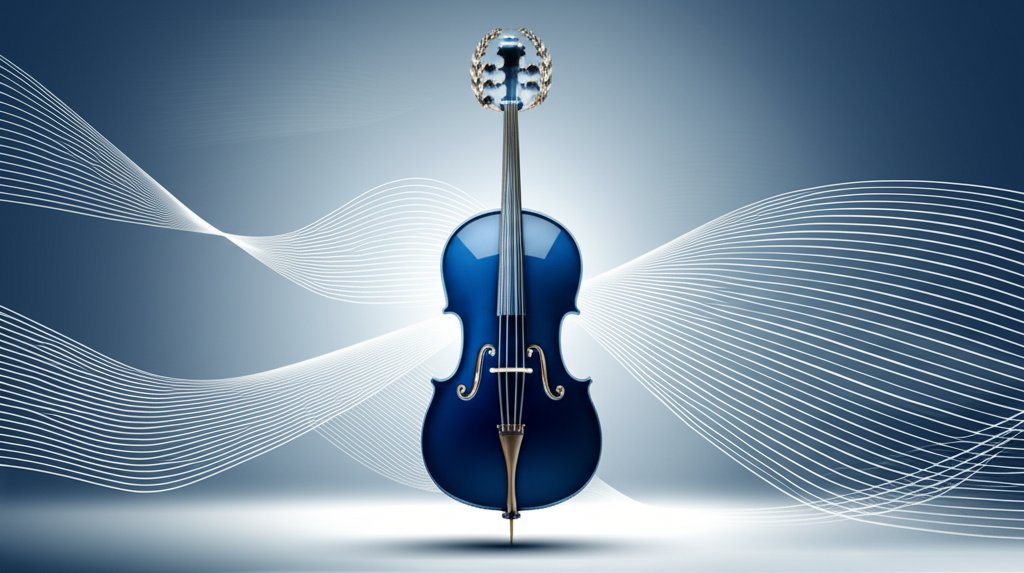It’s the silence before the first note—a shared breath between a violinist, a cellist, and a pianist. In that moment, three individuals become a single voice. This intimate, dynamic conversation is the soul of chamber music, and a chamber music competition is where that dialogue is tested, celebrated, and pushed to new heights of artistic expression. It’s more than a contest; it’s a crucible for collaboration, a stage where the delicate art of listening is as important as the virtuosity of playing.
Whether you’re part of a newly formed trio or a seasoned quartet looking to make your mark, understanding the landscape of these prestigious events is your first step. This guide is your roadmap—from choosing the right competition to understanding what judges truly listen for.
At a Glance: Your Quick Guide
- What is it? A chamber music competition evaluates small ensembles (typically 3-8 musicians) on their technical skill, musical interpretation, and, most importantly, their collaborative synergy.
- Why Enter? Beyond cash prizes, competitions offer invaluable performance experience, feedback from world-class musicians, networking opportunities, and a significant career boost.
- Who are the big players? Prestigious live events include the Fischoff National Chamber Music Competition and the Banff International String Quartet Competition. Online competitions are also gaining prominence, offering global accessibility.
- What’s the process? It typically involves a pre-screening round with a recording, followed by live semi-final and final rounds for selected ensembles.
- What’s the key to success? Impeccable ensemble cohesion. Judges look for a unified artistic vision, where the group breathes, phrases, and communicates as one.
The Heart of Collaboration: What Makes a Chamber Music Competition Unique?
Unlike a solo competition that spotlights a single virtuoso, a chamber music competition places the ensemble at its core. The hero of the story isn’t one person; it’s the group. Think of it as a high-stakes conversation. Is every voice heard? Does the argument and resolution of a Beethoven trio feel authentic? Does the wit of a Haydn quartet sparkle with shared understanding?
This focus on interplay is what sets these events apart. Organizations like Chamber Music America (CMA) and the European Chamber Music Teachers Association (ECMTA) have worked for decades to foster this art form, supporting competitions that celebrate this unique blend of individual talent and collective spirit. A successful ensemble doesn’t just play together—they think, feel, and interpret music as a single, multi-limbed organism.
The repertoire itself is a testament to this. From the intimate string quartets of the Classical era to the complex, rhythmically diverse works of today, chamber music demands a level of communication that is almost telepathic. This is the magic that judges, and audiences, are hoping to witness.
Is Your Ensemble Ready? Key Questions to Ask Before You Apply
The decision to enter a competition is a significant one. Before you dive into applications and recording sessions, gather your ensemble for an honest conversation.
1. Is Our Musical Vision Cohesive?
Do you agree on fundamental interpretive choices? Disagreements are normal, but a deep-seated conflict about tempo, style, or phrasing will be audible to the judges. You must present a unified artistic front.
2. Is Our Repertoire Polished and Strategic?
Your chosen pieces are your calling card. They should not only be technically flawless but also showcase your ensemble’s unique strengths. A well-balanced program often includes contrasting works that display a range of styles and emotional depth. Can you perform these pieces confidently under extreme pressure?
3. Have We Mastered the Art of Rehearsal?
Effective rehearsal is about more than just playing the notes correctly. It’s about problem-solving, listening intently to one another, and making collective musical decisions. A group that knows how to work efficiently and respectfully together is a group that is ready to compete.
4. Are We Logistically and Financially Prepared?
Competitions require an investment of time and money. Consider application fees, travel costs for live rounds, and the hours of rehearsal needed. Ensure every member is fully committed to the entire process. For example, the Chicago National Chamber Music Competition has fees ranging from $75 to $150, a common range for youth-focused events.
Navigating the Landscape: From Historic Stages to Digital Arenas
The world of chamber music competitions is rich and varied. Understanding the different tiers and formats will help you find the right fit for your ensemble’s current level and goals.
The Titans: Legacy Competitions
These are the hallowed grounds of chamber music, known for launching international careers.
- Fischoff National Chamber Music Competition: Held in the United States, Fischoff is one of the largest and most respected competitions, attracting young ensembles from around the globe.
- Banff International String Quartet Competition (BISQC): A demanding, week-long event in Canada that is a veritable Olympics for string quartets. Winning here is a life-changing achievement.
- Melbourne International Chamber Music Competition: This prestigious Australian event brings together top-tier young ensembles for a multi-round showcase of talent and endurance.
Entering these competitions is a long-term goal for many ensembles. The standards are exceptionally high, but the rewards—in terms of prestige and career opportunities—are unparalleled.
The New Wave: Accessible Online Competitions
The rise of digital platforms has democratized the competition circuit. Online events remove geographical and financial barriers, allowing ensembles to compete from anywhere in the world. They are an excellent way to gain experience, receive feedback, and build your ensemble’s resume.
Many of these are open to all instruments and ages, offering a fantastic entry point. For instance, the World’s Best Musicians Competition and the Mozart International Music Competition are both free to enter and held online, making them incredibly accessible. Others, like the Carl Reinecke International Music Competition, offer a global stage judged by esteemed international musicians.
Deconstructing the Application: A Step-by-Step Guide

The application process can feel daunting, but breaking it down into manageable steps makes it approachable. Let’s use real-world examples from the Coltman and Chicago competitions to illustrate the journey.
Step 1: Choosing Your Repertoire
This is the most critical artistic decision you’ll make. Your repertoire must meet the competition’s requirements while showcasing your ensemble at its best.
The 2026 Chicago National Chamber Music Competition, for example, requires a program of at least 15 minutes featuring two contrasting movements. This is a standard format.
- Contrast is Key: Select pieces from different periods or with different emotional characters. A fiery, fast movement paired with a lyrical, introspective one demonstrates your range.
- Play to Your Strengths: If your ensemble excels at the rhythmic drive of a Bartók quartet, include it. If your blend is perfect for the lush harmonies of Brahms, let that shine.
- Follow the Rules: Pay meticulous attention to timing requirements and any specific composer restrictions.
Step 2: The Pre-Screening Recording
For most major competitions, your first hurdle is a pre-screening round. This is typically a video or audio recording that a preliminary panel of judges will review.
- Audio Quality Matters: You don’t need a million-dollar studio, but your recording must be clean, clear, and well-balanced. Invest in good microphones and choose a space with favorable acoustics. A bad recording can misrepresent your ensemble’s sound and get you eliminated before you even have a chance.
- One Unedited Take: Most competitions require complete, unedited takes of each movement. This simulates a live performance and demonstrates your stamina and consistency.
- Visual Professionalism: For video submissions, present yourselves professionally. Ensure good lighting, a clean background, and appropriate performance attire. Let the focus be on your music-making.
Step 3: Assembling Your Application Packet
Once your recording is ready, you’ll need to complete the administrative side. This is where attention to detail is crucial. You can often [placeholder_link slug=”chamber-music-contest” text=”Learn about the chamber contest”] rules and requirements on the organization’s website.
- Biographies and Photos: Craft a concise, professional biography for your ensemble and have high-quality headshots ready.
- Deadlines are Absolute: Mark your calendar. The 13th Coltman Chamber Music Competition, for instance, has an online application deadline of December 19, 2025, at 11:59 PM (CST). Missing a deadline by even one minute means disqualification.
- Proofread Everything: Typos in your application form or ensemble bio look unprofessional. Have multiple people review all materials before you click “submit.”
Behind the Judges’ Table: What Are They Really Listening For?
When the judges listen, they are evaluating your performance on several layers. While technical perfection is the baseline, it’s the deeper elements of musicality and communication that separate the finalists from the rest of the pack.
Technical Precision
This is the foundation. Without it, no amount of musicality will suffice.
- Intonation: Are you playing in tune with each other? This is non-negotiable.
- Rhythmic Accuracy: Is the ensemble rhythmically tight? Do you feel the pulse as one?
- Clarity and Articulation: Are individual lines clear and distinct, yet part of a coherent whole?
Musicality and Interpretation
This is where your ensemble’s voice emerges.
- Phrasing and Shape: Does the music have a clear direction? Do you shape phrases with a shared intention?
- Dynamic Range: Do you explore the full spectrum from a true pianissimo to a powerful fortissimo?
- Sound Quality: Does the ensemble have a beautiful, blended, and balanced tone?
Ensemble Cohesion
This is the single most important criterion in a chamber music competition.
- Communication: Are you listening to each other? Cues should be subtle and seamless. The performance should feel like a conversation, with natural give-and-take.
- Shared Vision: Do you sound like you are telling the same story? From the first note to the last, the interpretation must feel unified.
- Balance: Is any one instrument overpowering the others? The texture should be transparent, allowing key lines to emerge naturally.
The Prize and Beyond: What Happens After You Win (or Don’t)?
The advertised prizes are certainly alluring. The winner of the Coltman Competition receives a cash prize and a live broadcast performance on KMFA 89.5. The Chicago Competition offers over $5,000 in cash prizes and scholarships. These are tangible rewards that can provide a significant boost.
However, the true value of competing often lies beyond the winner’s circle.
- Invaluable Feedback: Many competitions offer commentary from the judges. This feedback from world-class artists is a priceless educational opportunity.
- Performance Experience: Performing under the intense pressure of a competition is an experience like no other. It builds resilience, focus, and confidence.
- Networking: You will meet fellow musicians, judges, and arts administrators, building connections that can lead to future collaborations and performances.
- Publicity: Being a semi-finalist or finalist in a major competition is a mark of excellence that can be used in your ensemble’s biography and press materials for years to come.
And if you don’t advance? It’s not a failure. It’s data. It’s an opportunity to analyze your performance, absorb the feedback, and return to the practice room with a renewed sense of purpose and a clearer path forward.
Your Questions, Answered: A Chamber Music Competition FAQ
How is a chamber music competition different from a solo competition?
The primary difference is the focus. A solo competition is about individual virtuosity. A chamber competition is about collaboration. The judges are evaluating how well you play together, not just how well each person plays their part.
What is a typical ensemble size?
It varies, but most competitions focus on groups of 3 to 8 musicians. The Chicago competition explicitly states this range, with a maximum of one piano. String quartets, piano trios, and woodwind quintets are the most common configurations.
Do we need a professional studio recording for the pre-screening round?
Not necessarily. The goal is a high-quality, accurate representation of your sound. A well-made recording in a good acoustic space with quality microphones is often sufficient. The key is that the audio is clean, balanced, and free of distortion.
Are online competitions “worth it” compared to live ones?
Absolutely. While they can’t replicate the energy of a live performance, they offer incredible accessibility, lower costs, and the chance to compete on a global stage. They are an excellent way to test your repertoire and receive professional feedback without the expense of travel.
Your Next Move: Finding and Preparing for Your First Competition
You’re inspired, your ensemble is ready, and you want to take the next step. Here’s how to begin.
- Research and Create a Shortlist. Start by looking for competitions that fit your ensemble’s age, instrumentation, and experience level. Don’t just aim for the biggest names; find a competition where you can be competitive and have a positive experience.
- Mark Your Calendars. Application periods open and close months, sometimes even a year, before the event. Create a shared calendar with all relevant deadlines.
- Start Preparing Now. Choose your repertoire early and begin the slow, meticulous work of perfecting it. Record your rehearsals regularly to get used to the process and to critique yourselves objectively.
To help you get started, here is a list of several upcoming competitions, ranging from online to in-person events:
| Competition Name | Location | Dates | Application Deadline |
| :— | :— | :— | :— |
| World Grand Prix International Music Contest | Online (UK) | Oct 27 – Nov 28, 2025 | November 28, 2025 |
| Mozart International Music Competition | Online (Warsaw) | Nov 30 – Dec 15, 2025 | November 30, 2025 |
| YEMF Int’l Young Artists Competition | York, UK | July 8-11, 2026 | December 8, 2025 |
| Coltman Chamber Music Competition | Austin, TX, USA | March 7-8, 2026 | December 19, 2025 |
| International Competition Astor Piazzolla® | Como, Italy | Feb 27 – Mar 1, 2026 | January 15, 2026 |
| Chicago National Chamber Music Comp. | Live (MYAC) | Finals March 8, 2026 | January 25, 2026 |
| Kreutzer International Music Competition | Ghent, Belgium | August 4-8, 2026 | April 1, 2026 |
This journey is a marathon, not a sprint. The process of preparing for and participating in a chamber music competition will strengthen your ensemble in ways you can’t yet imagine. It will refine your communication, deepen your musical understanding, and forge a bond that resonates far beyond any single performance. Now, take a breath together—and begin the conversation.
- Premier Chamber Music Contest Spotlights Exceptional Ensemble Performances - November 2, 2025
- Chamber Music Competition Invites Musicians to Showcase Their Artistry - November 1, 2025
- Instrument-Specific Music Competitions Define Musical Talent by Instrument - October 31, 2025










